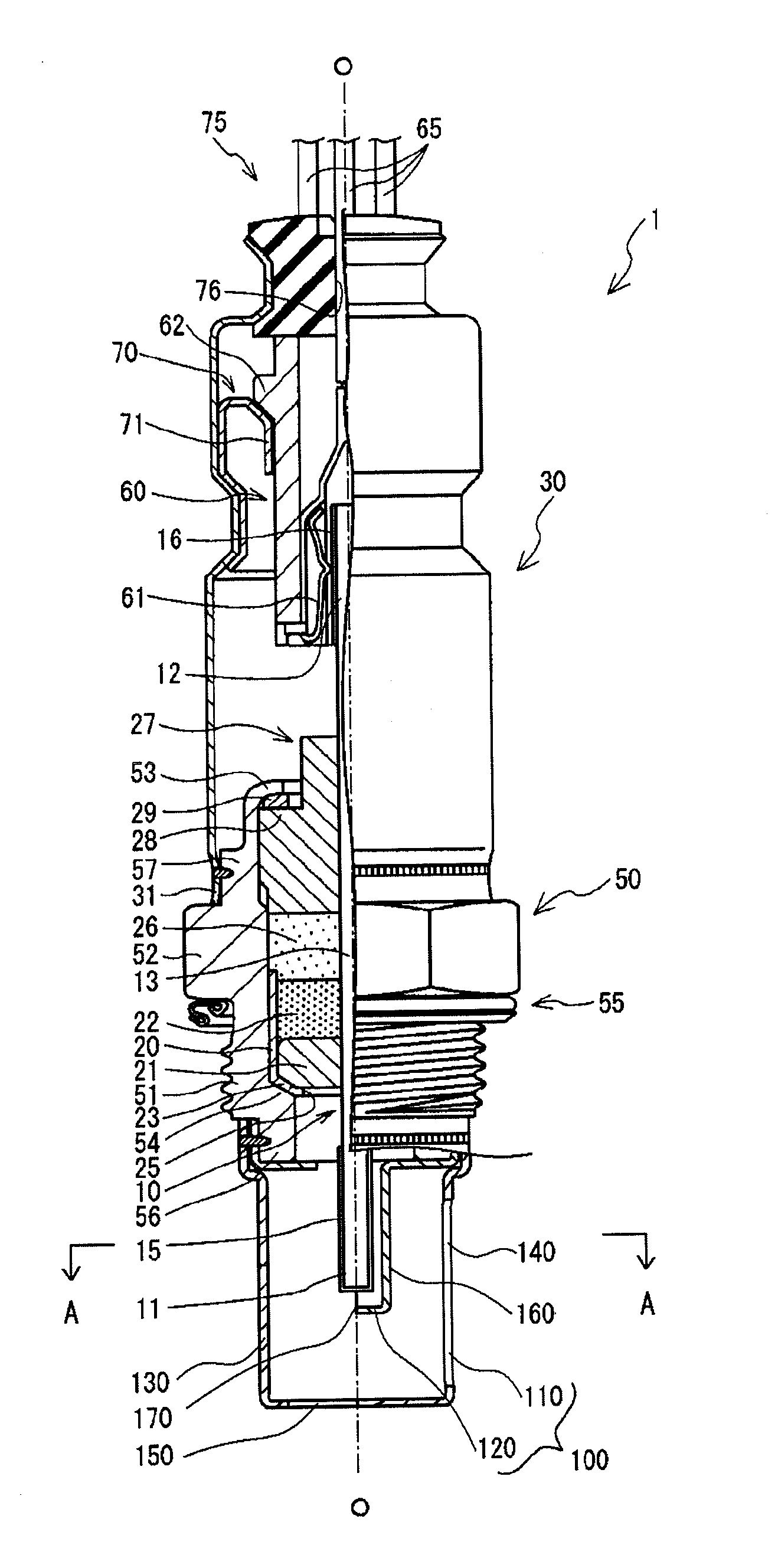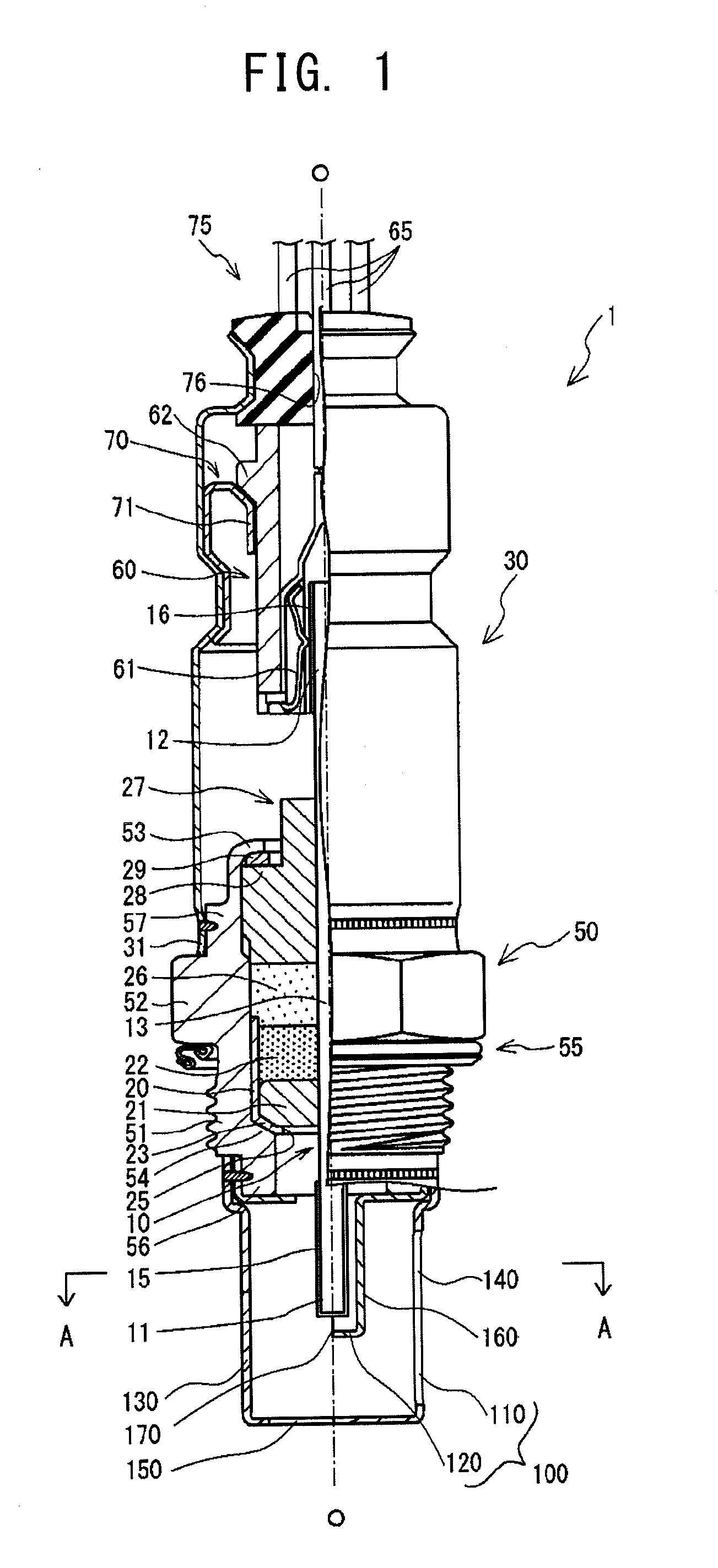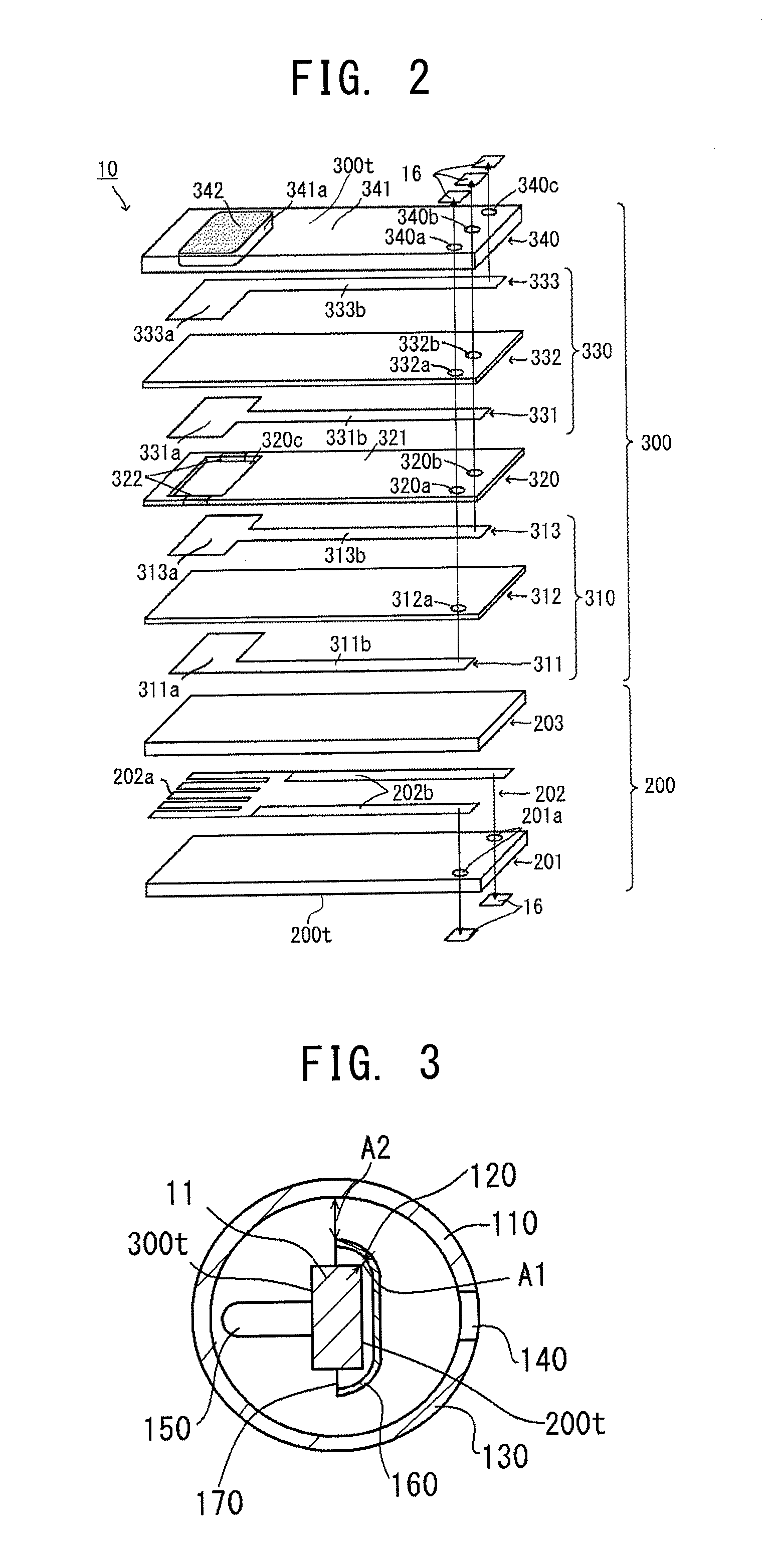Gas sensor
a technology of gas sensor and detection element, which is applied in the field of gas sensor, can solve the problems of thermal shock to the detection element and cracking, and achieve the effects of preventing cracking in the detection element, and preventing deterioration in detection accuracy
- Summary
- Abstract
- Description
- Claims
- Application Information
AI Technical Summary
Benefits of technology
Problems solved by technology
Method used
Image
Examples
Embodiment Construction
[0052]A gas sensor according to an embodiment of the present invention will next be described with reference to the drawings. First, the structure of a gas sensor 1 will be described, by way of example, with reference to FIG. 1. FIG. 1 is a partially sectional view of the gas sensor 1. In FIG. 1, the direction of an axis O (represented by a dash-dot line) of the gas sensor 1 coincides with the vertical direction. In the following description, a side toward a detection portion 11 of a detection element 10 held in the interior of the gas sensor 1 is referred to as a front side of the gas sensor 1, and a side toward a rear end portion 12 is referred to as a rear side of the gas sensor 1.
[0053]The gas sensor 1 shown in FIG. 1 is attached to an intake passage 2 (see FIG. 5) of an internal combustion engine. The detection portion 11 of the detection element 10 held in the interior of the gas sensor 1 is exposed to intake gas or intake recirculation gas which flows through the intake passa...
PUM
 Login to View More
Login to View More Abstract
Description
Claims
Application Information
 Login to View More
Login to View More - R&D
- Intellectual Property
- Life Sciences
- Materials
- Tech Scout
- Unparalleled Data Quality
- Higher Quality Content
- 60% Fewer Hallucinations
Browse by: Latest US Patents, China's latest patents, Technical Efficacy Thesaurus, Application Domain, Technology Topic, Popular Technical Reports.
© 2025 PatSnap. All rights reserved.Legal|Privacy policy|Modern Slavery Act Transparency Statement|Sitemap|About US| Contact US: help@patsnap.com



